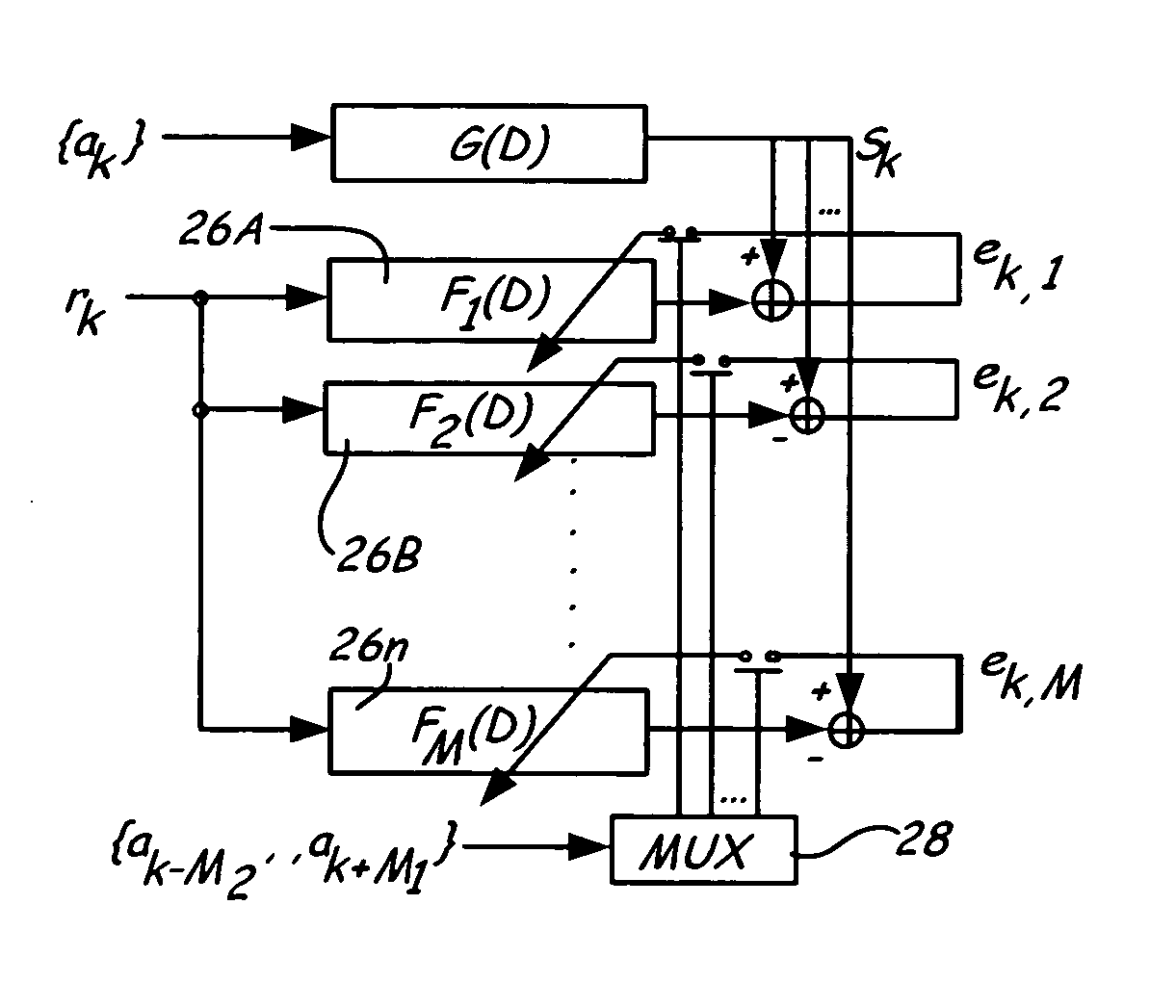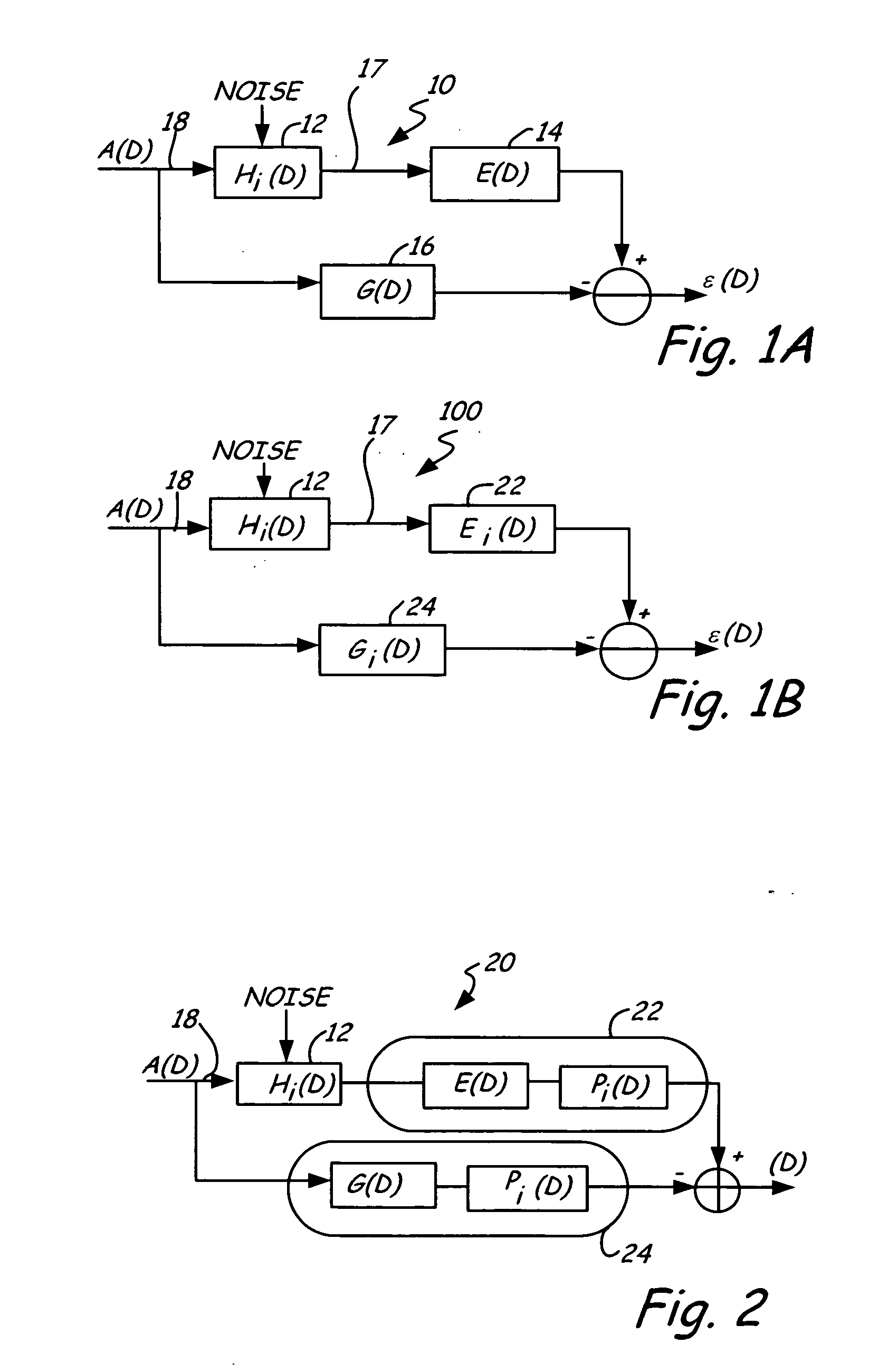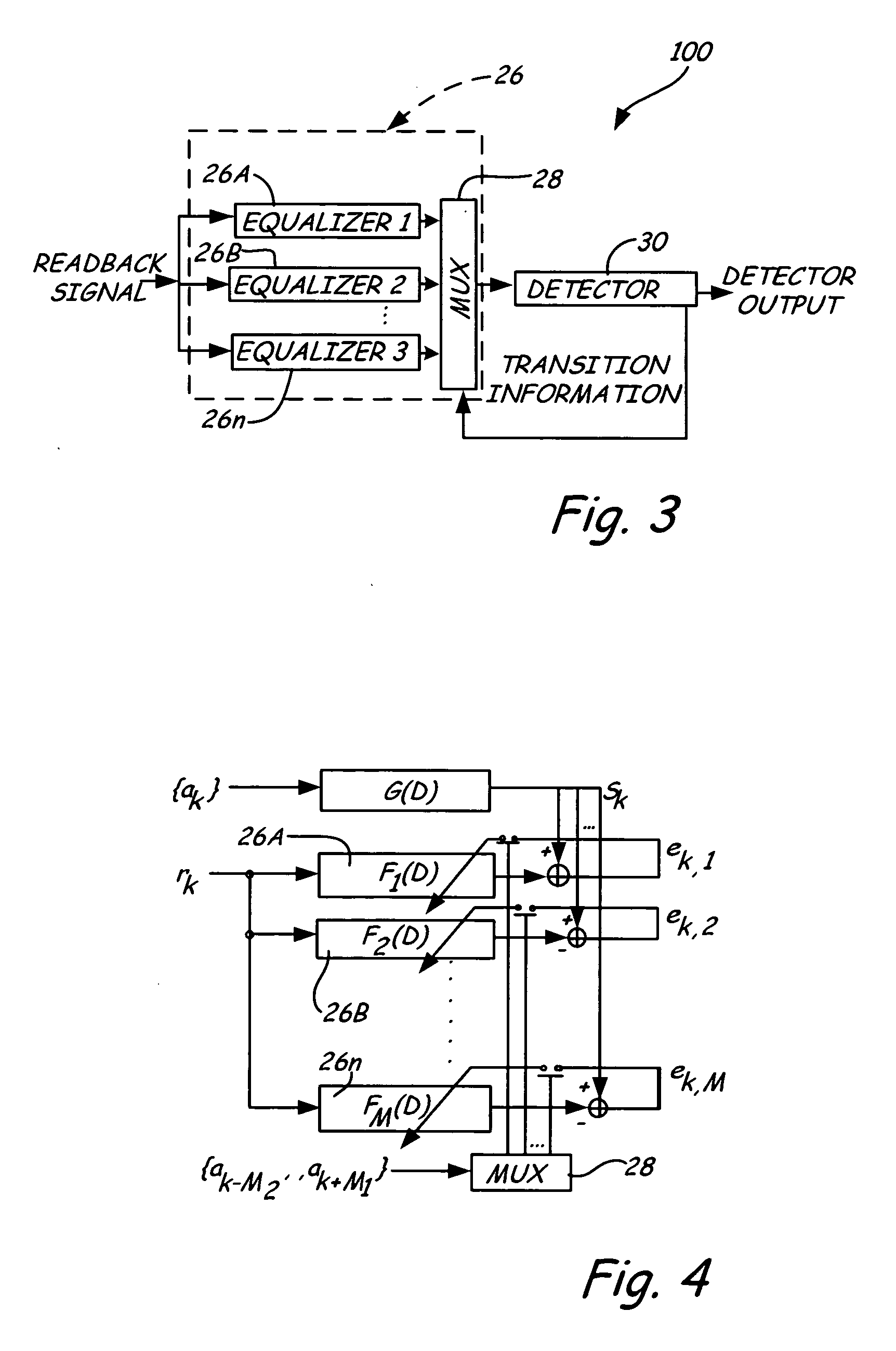Pattern-dependent equalization and detection
a pattern-dependent equalization and detection technology, applied in the field of pattern-dependent equalization and detection, can solve the problems of distorted signal, more severe isi, and more susceptible to incorrect interpretation of affected symbols at the receiver
- Summary
- Abstract
- Description
- Claims
- Application Information
AI Technical Summary
Problems solved by technology
Method used
Image
Examples
Embodiment Construction
[0030] Conventional partial-response maximum-likelihood (PRML) systems typically use a single linear equalizer to shape the overall channel response to a desired partial-response (PR) target prior to sequence detection. The original data symbols then are recovered from the equalized samples. However, recording channels are indeed signal or pattern-dependent channels. Consequently, in principle, to realize perfect PR equalization, the equalizer should be pattern-dependent as well. The present invention uses a filter bank for equalization, where each filter (equalizer) is tuned to a specific data pattern (hence the name pattern-dependent equalization). Since the user data is unknown and to be recovered, the detection device is modified so that the output from the equalizer bank can be effectively utilized. The system and method of the present invention offer consistent signal-to-noise ratio (SNR) gains over conventional equalization methods for media noise dominated channels, such as ...
PUM
 Login to View More
Login to View More Abstract
Description
Claims
Application Information
 Login to View More
Login to View More - R&D
- Intellectual Property
- Life Sciences
- Materials
- Tech Scout
- Unparalleled Data Quality
- Higher Quality Content
- 60% Fewer Hallucinations
Browse by: Latest US Patents, China's latest patents, Technical Efficacy Thesaurus, Application Domain, Technology Topic, Popular Technical Reports.
© 2025 PatSnap. All rights reserved.Legal|Privacy policy|Modern Slavery Act Transparency Statement|Sitemap|About US| Contact US: help@patsnap.com



